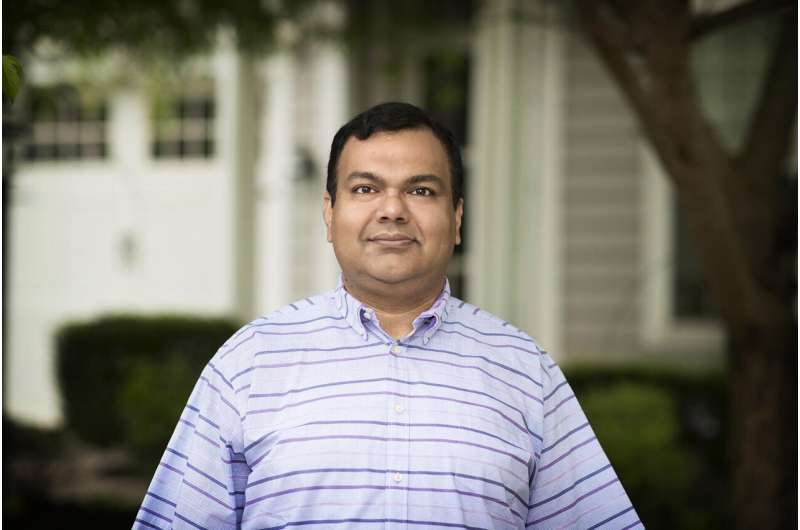Rajesh Balkrishnan of UVA’s Department of Public Health Sciences worked with a research team including Ansh A. Kulkarni, Raj P. Desai and Hector E. Alcala. Credit: Dan Addison, University Communications
More than a quarter of American infants in 2018 had not received common childhood vaccines that protect them from illnesses such as polio, tetanus, measles, mumps and chicken pox, new research from the University of Virginia School of Medicine reveals.
Only 72.8% of infants aged 19 to 35 months had received the full series of the seven recommended vaccines, falling far short of the federal government's goal of 90%. Those less likely to complete the vaccine series include African American infants, infants born to mothers with less than a high school education and infants in families with incomes below the federal poverty line.
The researchers warn that failure to complete the vaccine series leaves children at increased risk of infection, illness and death. It also reduces the herd immunity of the entire population, allowing diseases to spread more easily.
"These findings highlight that significant disparities still exist in protecting infants from preventable diseases in the United States," researcher Rajesh Balkrishnan of UVA's Department of Public Health Sciences said.
Trends in Childhood Vaccination
Some good news: There was a 30% increase in the overall number of infants getting the full vaccine series between 2009 and 2018, the 10-year period the researchers examined.
However, disparities in vaccine uptake grew between low-income families and higher-income families in that time. In 2009, families below the federal poverty line were 9% less likely to get the full vaccine series than families with annual income above $75,000. In 2018, low-income families were 37% less likely to complete the vaccine series.
The researchers say the lower rate among low-income families is especially disheartening considering the availability of federal programs such as Vaccine for Children, which provides free vaccines for uninsured, underinsured and Medicaid-eligible children.
"Free vaccination coupled with no physician administration fees, linked with potential programs that are frequently accessed by low-income families, could be a potential solution to increase immunization rates," Balkrishnan said "The role of health care professionals such as pharmacists could also be expanded to provide these services cost effectively."
The study found that mothers who had not completed high school were almost 27% less likely to have their infants fully vaccinated than moms with college education. That disparity had increased sharply from a previous study evaluating the period from 1995 to 2003. The previous study found that mothers with less than high-school education were 7.8% less likely to complete the vaccine series.
Among African Americans, completion of the vaccine series was significantly lower than in both whites and Hispanics. The researchers call this disparity "unacceptable" and say cost-effective interventions are needed to increase immunization rates and address vaccine hesitancy.
"These findings are particularly important in the context of the current COVID pandemic," Balkrishnan said. "Particular attention needs to be paid to vulnerable populations in ensuring the availability and access to important life-saving vaccines."
More information: Ansh A. Kulkarni et al. Persistent Disparities in Immunization Rates for the Seven-Vaccine Series Among Infants 19–35 Months in the United States, Health Equity (2021). DOI: 10.1089/heq.2020.0127
Provided by University of Virginia
























